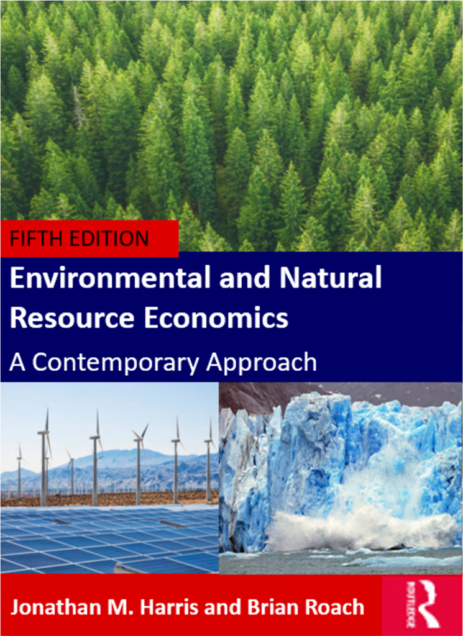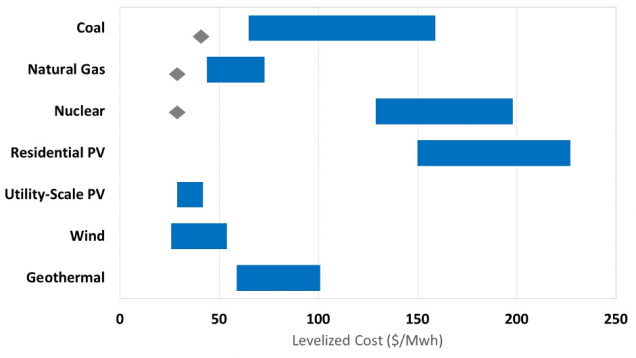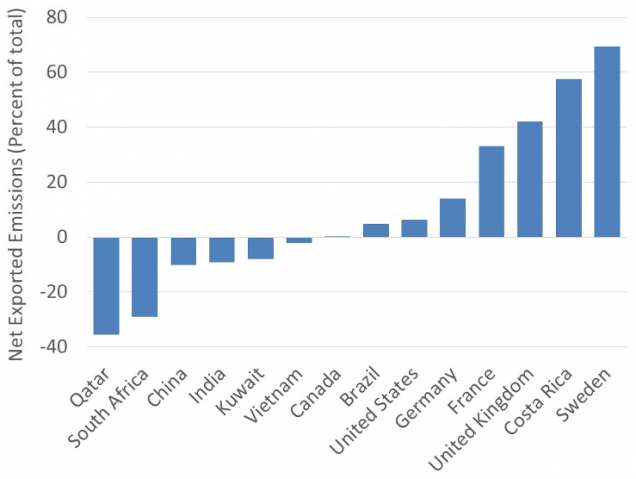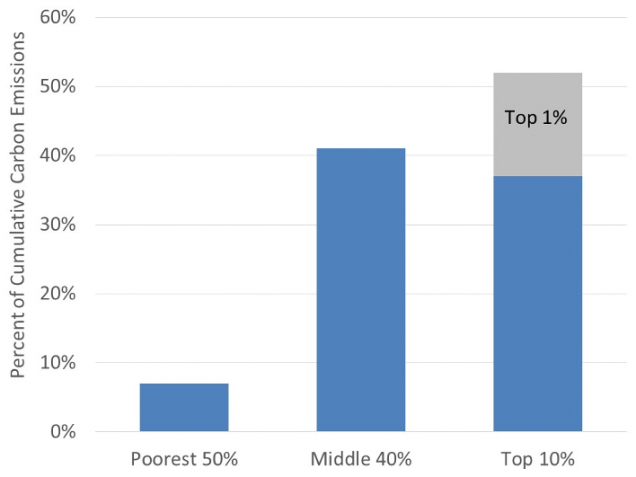New Edition of ECI’s Environmental Text Shares Updated Materials on Renewable Energy, Climate Policy and Land Management

Twenty years since the initial publication, the Fifth Edition of Environmental and Natural Resource Economics: A Contemporary Approach by Jonathan M. Harris and Brian Roach is now available from Routledge. The text provides coverage of core theoretical concepts from environmental and ecological economics, along with topical chapters on climate change, fisheries, agriculture, trade and other environmental policy issues. The text’s accessible writing emphasizes the strengths and limitations of economic analysis, with a focus on applications to real-world environmental challenges.
The Fifth Edition incorporates much new material and updates perspectives on key issues. Perhaps the most dramatic changes are in the areas of energy and climate change. Chapter 11 on energy issues has been significantly revised to focus on the world’s four key energy challenges:
- The transition away from fossil fuels toward renewable energy needs to be accelerated if the world is to avoid unacceptable climate change.
- Expanding the world’s reliance on renewable energy will require the electrification of the majority of the world’s energy system.
- The energy transition needs to be accompanied by efforts to restrain the growth in energy demand, mainly in developed countries.
- Progress toward the above three goals must coincide with a reduction in global energy inequality, ensuring developing countries have access to the clean energy that is needed to increase their well-being.
Since the Fourth Edition was published in 2018, renewable energy costs have declined much faster than anticipated. Currently, wind and solar energy are the world’s two cheapest energy sources, on average, as shown in Figure 1 below. Largely driven by the changing economics, about 80 percent of all new energy installed in 2020 was renewable. As renewable costs continue to decline, a significant transition to sustainable energy will be inevitable.
Figure 1. Unsubsidized Levelized Cost of Different Energy Sources

Note: Diamond markers indicate the midpoint of marginal operation costs for fully depreciated plants.
The text notes changing perspectives on reaching “peak oil”. In the past, debate focused on when global oil production might peak, leading to increasing scarcity and higher prices. Now, the focus has shifted to when peak global oil demand will occur, likely some time in 2020s. The text also incorporates new material on the inaccuracy of energy forecasts by government agencies that have consistently under-estimated adoption rates and price declines for renewable energy.
Another key development since the previous edition is the unprecedented reductions in carbon emissions and air pollution due to the global economic slowdown from the COVID-19 pandemic. While some effects are likely to last beyond the pandemic, a rebound to pre-pandemic norms would soon eliminate any reasonable chance of meeting the Paris Climate Agreement targets. Chapter 12 on climate change economics notes that the current national climate commitments need to be significantly strengthened in order to meet climate targets. Chapter 13, on climate change policies, includes a new section on “Getting to Net Zero” and emphasizes the necessity of improved management of carbon sinks such as forests, wetlands and soils.
While Chapter 19 of the Fourth Edition focused solely on forests, the chapter now covers both forests (with reduced content) and land preservation issues. New material includes a discussion of the economic value of land preservation (including urban land) and land conservation policies for both private and public lands, such as conservation easements, zoning restrictions, wildlife corridors and buffer zones.
Chapter 21 on global trade includes new material on exported carbon emissions. While many developed countries have been successful at reducing domestic carbon emissions in recent years, these gains are often offset by the emissions embedded in goods imported from developing countries. As shown in Figure 2 below, countries such as China and India are net importers of carbon emissions, while developed countries tend to be net exporters.
Figure 2. Accounting for Carbon Emissions Embedded in International Trade

Chapter 22 on policies for sustainable development has been significantly re-written to differentiate between the sustainability challenges in developed and developing countries. The chapter now includes material on global environmental justice, noting that the majority of the world’s cumulative carbon emissions have been emitted by world’s richest 10 percent of people, as shown in Figure 3 below. A new section on rethinking economic growth discusses the differences between green growth, where technological innovations, efficiency improvements and decoupling can permit continued economic growth, and the necessity of a transition to a post-growth or steady-state economy, potentially after a period of planned degrowth in many developed nations.
Figure 3. Distribution of Cumulative Global Carbon Emissions, 1990-2015, by Income Group

One of the distinguishing characteristics of the text is its extensive use of academic and government references. With a bibliography of nearly 900 sources, the text includes the most recent research on a wide range of environmental issues. In addition to a thorough updating of figures and tables, many new boxes have been added to present real-world applications including a payments for ecosystem services project in Uganda, the use of environmental asset accounts in Sweden, the vulnerability of US infrastructure to climate extremes, the growth of organic agriculture, and the impact of the COVID-19 pandemic on global carbon emissions and land management. The new edition also includes several new exercises and web links, along with updated instructor materials including exercise answers, teaching tips, and a test bank of multiple-choice and essay questions.
*
Never miss an update: Sign up to receive ECI’s newsletter.
